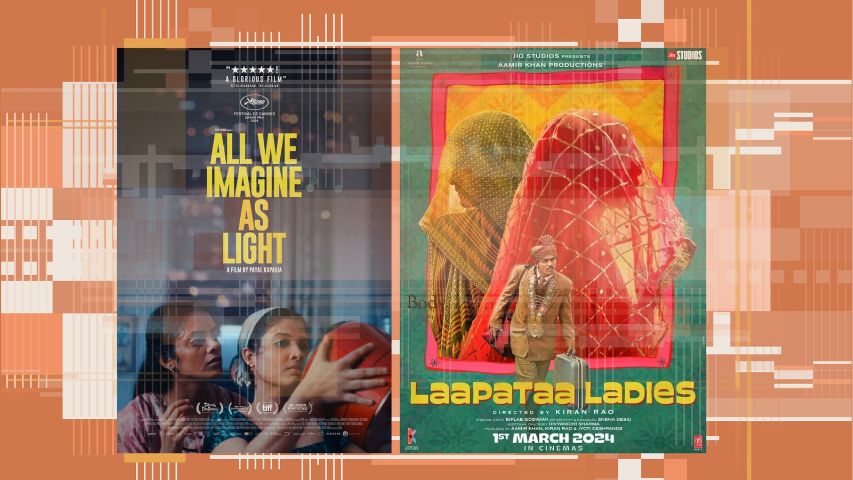-853X543.jpg)
THOUGHT FACTORY: WHEN INSTITUTIONS FAIL, ART SUFFERS
by Vinta Nanda December 21 2024, 12:00 am Estimated Reading Time: 4 mins, 13 secsWhen cultural institutions compromise artistic integrity due to bureaucratic interference, creative expression weakens, and a nation's cultural identity is inevitably at risk of global marginalization. Vinta Nanda writes…
The controversy surrounding India’s Oscar entry Laapataa Ladies highlights how political influence and institutional compromise can hinder artistic excellence. As filmmakers and critics question the Film Federation of India’s selection process, the need for independent cultural institutions has never been clearer. When films like All We Imagine As Light—praised globally for artistic innovation—are dismissed as “technically poor,” it reflects a flawed system. Restoring autonomy in creative decision-making is essential for preserving India’s cultural identity and achieving international cinematic recognition. Read on to explore how institutional freedom can redefine India’s global film presence.
The recent controversy surrounding India’s official entry to the 97th Academy Awards for Best International Feature Film has exposed deep-seated issues within the selection process governed by the Film Federation of India (FFI). When Aamir Khan and Kiran Rao’s Laapataa Ladies exited the Oscars race, I couldn’t help but reflect on the broader implications of the FFI’s choice. Many filmmakers, including Hansal Mehta, voiced their discontent, arguing that Payal Kapadia’s All We Imagine As Light was a more compelling and deserving contender. FFI jury head Jahnu Barua’s remarks branding Kapadia’s film as “technically poor” further fuelled my concerns about the urgent need for institutional autonomy in India’s cinematic representation on the global stage.
The Selection Controversy: Art or Appeasement?
While I believe Laapataa Ladies is a "terrific film," its journey to the Oscars was perhaps compromised by its shift from a wonderfully original story to a more formulaic narrative. The part where cops follow the young girl in a slapstick, oft-seen detective chase sequence diluted its creative authenticity, making it less likely to resonate with Academy voters. This narrative compromise weakened its potential to stand out in a competitive global arena.
By contrast, Payal Kapadia’s All We Imagine As Light remained artistically bold and technically powerful throughout its narrative. Labelling it “technically poor” raises critical questions about the evaluation criteria employed by the FFI jury. If artistic merit and technical craftsmanship were indeed the benchmarks, what standards were used to dismiss a globally acclaimed work?

The Influence of Politics and Power
Barua’s comments made me question the balance between artistic integrity and institutional obligation. Would he have dismissed All We Imagine As Light so readily if he were not occupying a position bound by institutional allegiance? It is plausible that his critique reflects the pressures of occupying a politically entangled post rather than an unbiased artistic evaluation.
In India, cultural institutions such as the FFI are often caught in the crossfire of governmental and bureaucratic influence. The selection of India’s Oscar entry is no exception. When governments overreach into cultural spaces where they are neither relevant nor competent, the results are predictable: compromised artistic choices, diluted representation, and global underperformance.
The fallout from Laapataa Ladies’ Oscar exit serves as a stark reminder of the consequences of institutional interference. An autonomous jury might have approached the selection process differently, valuing creative innovation over perceived marketability or appeasing external interests. A genuinely independent FFI would prioritize artistic merit, ensuring that films like All We Imagine As Light, celebrated globally for their avant-garde approach, are not dismissed due to nebulous "technical" concerns.
The Cost of Compromise
Institutions designed to promote cinema must remain bastions of independent thought and artistic freedom. When jury heads and decision-makers are constrained by institutional politics, the cost is not just the Oscar race—it is the stifling of India’s creative potential. Global recognition for Indian cinema cannot be achieved through compromised decision-making or adherence to bureaucratic preferences.
International film festivals have long recognized Kapadia’s work as an exemplar of innovative, boundary-pushing cinema. If such films are labelled "technically poor" by the very institutions meant to uplift them, it reflects a broken system—one in need of urgent reform.

Restoring Autonomy: A Cultural Imperative
The solution lies in establishing transparent, independent juries free from governmental influence. Cultural institutions must be empowered to make decisions based solely on artistic merit, not political considerations. International success demands authenticity, not calculated compromise.
India’s cinematic legacy is rich and diverse. To maintain and expand this legacy, institutions like the FFI must operate with complete autonomy, embracing bold and unconventional films that challenge societal narratives and resonate with global audiences. Only then can Indian cinema truly achieve the recognition it deserves on the world stage.
The Laapataa Ladies debacle emphasizes a crucial truth: when institutions compromise, art suffers. And when art suffers, so does the cultural identity of a nation. The time has come to reclaim the integrity of India’s cinematic representation—free from external control and true to the spirit of independent storytelling.




-173X130.jpg)
-173X130.jpg)
-173X130.jpg)
-173X130.jpg)
-173X130.jpg)
-173X130.jpg)

-173X130.jpg)